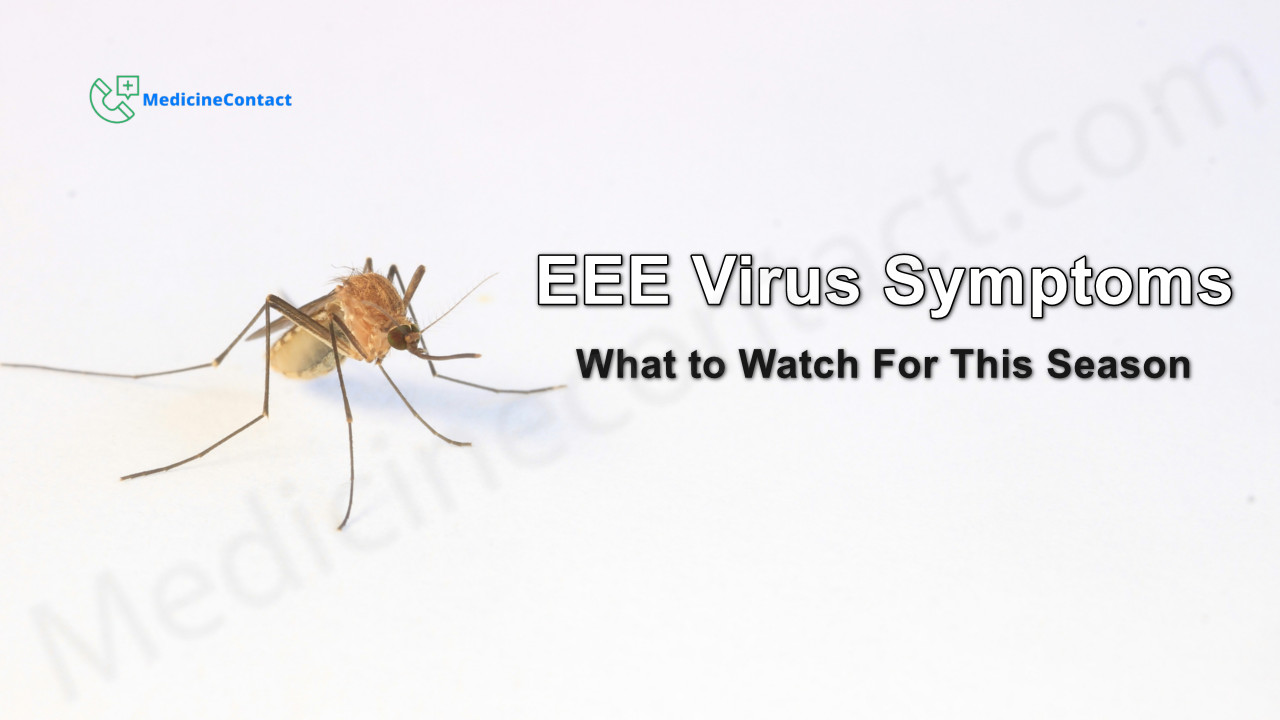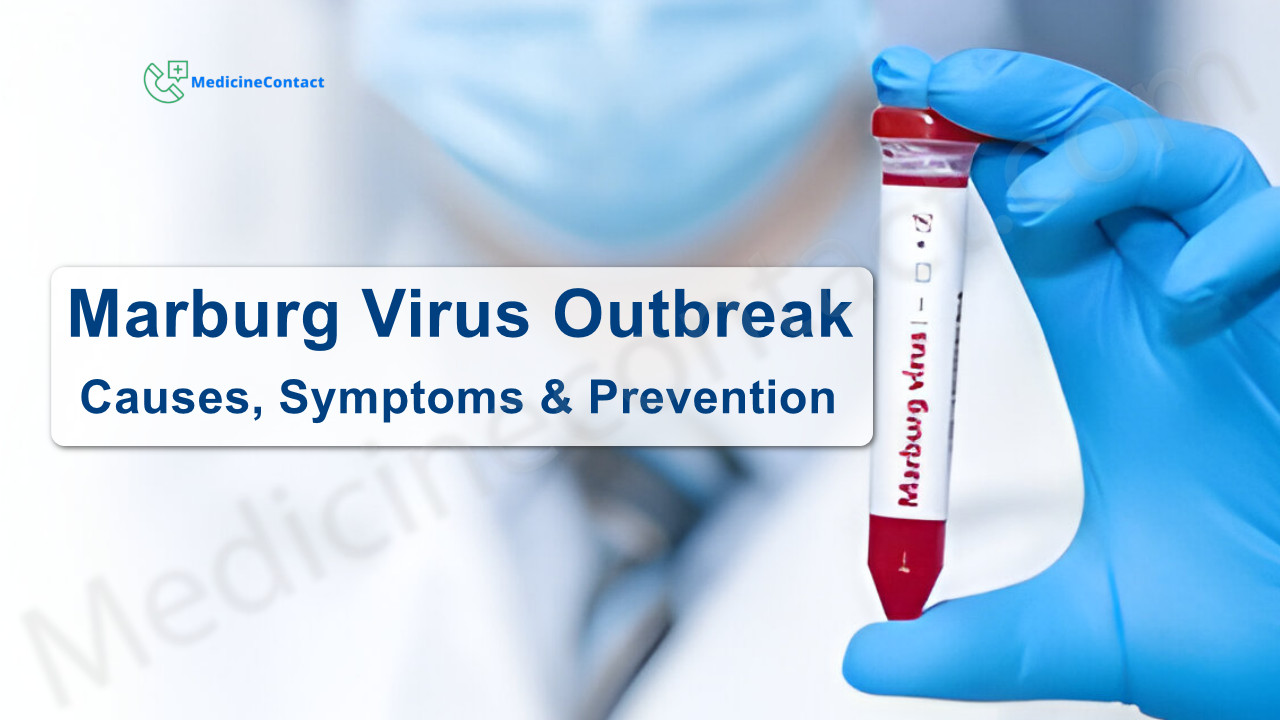
Introduction
Eastern equine encephalitis (EEE), also known as "Triple E," is a rare but severe mosquito-borne disease that poses a significant public health threat in New York. Transmitted primarily by the Culiseta melanura mosquito, this virus can lead to serious neurological conditions, including encephalitis, or brain inflammation. Documented since 1971, EEE has periodically affected residents of New York, with notable cases occurring in Ulster County.
Understanding the symptoms of EEE is crucial for timely medical intervention and reducing the risk of severe outcomes. Common early symptoms include fever, headache, vomiting, and diarrhea. In advanced stages, individuals may experience seizures and behavioral changes.
This article will cover:
- Preventive Measures: Effective strategies to avoid mosquito bites and minimize the risk of EEE infection.
- Public Health Initiatives: Ongoing efforts by health authorities to control mosquito populations and educate the public.
- Recognizing Symptoms: Identifying early and severe symptoms for prompt medical attention.
Stay informed about Eastern equine encephalitis (EEE) and take proactive steps to protect yourself and your community from this dangerous mosquito-borne disease.
Grasping the Basics of Eastern Equine Encephalitis (EEE)
What is EEE?
Eastern equine encephalitis (EEE), commonly known as "Triple E," is a rare yet severe mosquito-borne illness caused by the EEE virus. This virus is part of the Alphavirus genus and can result in significant brain inflammation, referred to as encephalitis. Although human cases are uncommon, the disease has a notably high fatality rate, underscoring the importance of awareness and preventive measures.
A Brief History in New York
Since its first documentation in 1971, EEE has posed a persistent threat to public health in New York. Over the decades, only 11 confirmed human cases have been reported, with three occurring in 2015 alone. Despite its rarity, the severe impact on those infected emphasizes the need for ongoing vigilance.
How Does EEE Spread?
The primary vector for EEE is mosquitoes, particularly the Culiseta melanura species. These mosquitoes thrive in swampy areas and are adept at transmitting the virus from birds, their natural hosts, to humans and other mammals. The transmission cycle typically involves:
- Birds: Serve as reservoirs for the EEE virus.
- Mosquitoes: Acquire the virus from infected birds and subsequently spread it to humans through bites.
Understanding these transmission methods highlights the importance of controlling mosquito populations and limiting exposure during peak seasons.
Public health initiatives and community education play critical roles in minimizing the risk of EEE outbreaks. Awareness campaigns often focus on reducing standing water where mosquitoes breed and promoting personal protective measures.
By knowing what EEE virus is and understanding its history in New York, people can better understand why it's important to take steps to prevent this dangerous mosquito-borne disease.
Recognizing the Symptoms of EEE Virus Infection
Understanding the symptoms of EEE (Eastern equine encephalitis) is crucial for timely diagnosis and treatment. The onset of symptoms can vary, but they generally appear 4 to 10 days after a mosquito bite from an infected mosquito.
Common Symptoms
Early-stage EEE virus symptoms can be mistaken for other viral infections. Key indicators include:
- Fever: Often sudden and high, reaching up to 104°F.
- Headache: Typically severe and persistent.
- Vomiting and Diarrhea: Gastrointestinal symptoms that may accompany the fever and headache.
Severe Symptoms
In some cases, the illness can progress rapidly to more serious neurological symptoms. These mosquito encephalitis symptoms include:
- Seizures: Sudden, uncontrolled electrical disturbances in the brain.
- Behavioral Changes: Alterations in mood, personality, or behavior such as confusion, irritability, or agitation.
- Drowsiness: Excessive sleepiness or lethargy that can't be easily explained.
Long-term Effects and Fatality Rates
Severe cases of EEE can lead to encephalitis (inflammation of the brain), which has a high fatality rate of around 30%. Survivors often face long-term effects such as:
“Permanent neurological damage including cognitive impairment, paralysis, and seizures.”
These long-term consequences underscore the importance of recognizing symptoms of mosquito virus early to initiate supportive care promptly.
Understanding these critical signs can make a significant difference in managing the disease effectively.
Identifying At-Risk Populations for EEE Virus Infection
Understanding who is more likely to get Eastern equine encephalitis (EEE) can help us better prevent and respond to the virus.
Individuals at Higher Risk
Age Risk Factors:
Over 50 Years Old:
Older adults are more vulnerable to EEE because their immune systems naturally weaken with age. This makes it harder for them to fight off infections, including mosquito-borne diseases like EEE. Additionally, older adults are also at higher risk for severe complications from illnesses like the flu, which can further complicate their overall health status.
Under 15 Years Old:
Children also fall into a high-risk category. Their immune systems are not fully developed, which can lead to a higher likelihood of severe symptoms if infected by the EEE virus.
Underlying Health Conditions
Pre-existing health issues can make EEE infection worse. Chronic illnesses and weakened immune systems are significant risk factors:
- Diabetes: Individuals with diabetes may face challenges in fighting off infections, increasing their susceptibility to severe illness from EEE.
- Chronic Kidney Disease: This condition can impair the body's ability to manage infections effectively.
- Weakened Immune Systems: People undergoing treatments like chemotherapy or those with autoimmune diseases often have weakened immune systems, putting them at higher risk.
Comparative Analysis
While the above groups are particularly vulnerable, it's essential to consider that anyone bitten by an infected mosquito is at risk of contracting the virus. For instance, while West Nile Virus (WNV) and Triple E share similarities as mosquito-borne viruses affecting New York residents, the fatality rate for severe cases of EEE is notably higher.
Key Takeaway: Identifying these vulnerable populations helps direct public health initiatives more efficiently. By focusing on protecting those over 50 and under 15 years old—and individuals with underlying health conditions—efforts can be tailored to mitigate the risks associated with this deadly virus.
Understanding Mosquito Activity Patterns and Risk Factors for EEE Transmission
Recognizing the peak risk periods for contracting Eastern equine encephalitis (EEE) is essential for effective prevention. Historical data indicates that the highest risk of EEE transmission occurs from late July to September. During these months, the mosquito populations, particularly the Culiseta melanura species, are at their most active, increasing the chances of spreading the virus.
Peak Risk Periods
- Late July to September: This period aligns with late summer when mosquito activity is at its zenith. The warm temperatures and increased humidity create ideal breeding conditions for mosquitoes.
Environmental Factors
Several environmental factors contribute to increased mosquito populations during these peak months:
- Warm Temperatures: Higher temperatures accelerate mosquito breeding cycles and development rates.
- Humidity and Rainfall: Standing water resulting from rainfall serves as breeding grounds for mosquitoes.
- Vegetation Density: Dense vegetation provides shelter and resting places for mosquitoes, promoting larger populations.
- Proximity to Wetlands: Areas near wetlands or swamps are particularly susceptible due to the natural habitat of Culiseta melanura.
Understanding these factors enables more targeted efforts in reducing mosquito populations and minimizing the risk of EEE transmission during high-risk periods. Surveillance programs often focus on these environmental cues to predict and mitigate potential outbreaks effectively.
By staying aware of mosquito activity patterns in relation to EEE transmission, individuals can take proactive steps to protect themselves during the most vulnerable times of the year. For instance, implementing strategies such as using insect repellents or installing screens on windows can significantly reduce exposure to these disease-carrying insects.
Practical Prevention Methods Against Mosquito Bites and EEE Virus Infection
Protecting yourself from mosquito bites is crucial in preventing the spread of the EEE mosquito virus. Here are some effective strategies to minimize your risk:
Use of Insect Repellents
Applying insect repellents is one of the most effective ways to ward off mosquitoes. Consider these options:
- DEET: Products containing DEET have been proven to be highly effective in repelling mosquitoes. Ensure to follow the product instructions for safe use.
- Oil of Lemon Eucalyptus: A natural alternative, oil of lemon eucalyptus can provide similar protection to DEET. It's particularly suitable for those seeking a plant-based option.
Clothing Recommendations
Wearing appropriate clothing can significantly reduce your exposure to mosquito bites. Keep these tips in mind:
- Long-Sleeved Shirts and Pants: Opt for long-sleeved shirts and pants, especially during dawn and dusk when mosquito activity is highest.
- Light-Colored Clothes: Mosquitoes are less attracted to light-colored fabrics. Choose whites, pastels, or other light hues.
- Permethrin-Treated Clothing: Consider using clothing treated with permethrin, an insecticide that repels mosquitoes effectively.
Additional Preventive Measures
In addition to repellents and clothing choices, adhere to these practices:
- Avoid Peak Mosquito Hours: Limit outdoor activities during peak mosquito hours (early morning and evening) when the risk of encountering the triple e mosquito virus is higher.
- Eliminate Standing Water: Mosquitoes breed in standing water. Regularly empty items like birdbaths, flower pots, and gutters.
- Use Mosquito Nets: When sleeping outdoors or in areas without screens, use mosquito nets for added protection.
Implementing these preventive measures helps you avoid mosquito bites effectively and reduces your risk of contracting the EEE virus.
Public Health Response Strategies to Combatting EEE in New York State
Recent Public Health Initiatives
New York State has ramped up its public health measures against EEE, recognizing the serious implications of this mosquito-borne disease. Several initiatives have been launched to control mosquito populations and reduce the risk of EEE virus infection.
Enhanced Surveillance Programs
These programs are crucial for tracking mosquito activity and identifying areas with high infection rates. Surveillance includes collecting and testing mosquitoes for the virus, monitoring bird populations (as birds are a primary host for the virus), and tracking reported human cases.
Public Awareness Campaigns
The state has invested in educating residents about the risks associated with EEE through various media channels. These campaigns emphasize preventive measures, such as using insect repellents and eliminating standing water where mosquitoes breed.
Mosquito Control Efforts
Local governments are actively involved in mosquito control, employing methods such as larviciding (targeting mosquito larvae) and adulticiding (spraying to kill adult mosquitoes). These efforts aim to reduce mosquito populations effectively during peak risk periods.
Role of Government Agencies
Government agencies play a pivotal role in addressing the threat of EEE virus in New York:
- Centers for Disease Control and Prevention (CDC): The CDC provides guidelines and resources for state health departments to manage mosquito-borne diseases. They assist with surveillance data analysis, offer technical support, and facilitate public education on EEE risks and prevention strategies.
- New York State Department of Health (NYSDOH): This department coordinates statewide efforts to monitor and respond to EEE outbreaks. They collaborate with local health departments to implement control measures and disseminate information to the public.
- Local Health Departments: These departments conduct on-the-ground activities, including mosquito trapping, testing, and community outreach programs. They work closely with state agencies to ensure swift action when high-risk areas are identified.
Monitoring & Informing the Public
Effective communication is critical in managing public health risks associated with EEE:
- Emergency Alerts: During peak seasons, public health officials issue alerts about increased mosquito activity or confirmed cases of EEE. These alerts keep residents informed about potential risks and recommended precautions.
- Educational Materials: Brochures, posters, social media posts, and website updates provide continuous education on how to prevent mosquito bites and recognize symptoms of EEE.
By focusing on comprehensive surveillance, robust public awareness campaigns, and coordinated control efforts, New York State aims to mitigate the impact of Triple E.
Conclusion: Stay Informed and Take Action Against Mosquito-Borne Diseases Like EEE This Season!
Understanding the symptoms and prevention methods of Eastern equine encephalitis (EEE) is crucial for safeguarding your health. Awareness plays a pivotal role in early detection and response.
Key Points Recap:
- Symptoms: Recognize signs like fever, headache, vomiting, and severe cases leading to seizures and encephalitis.
- Prevention: Utilize DEET or lemon eucalyptus repellents, wear protective clothing, and eliminate standing water to reduce mosquito breeding grounds.
- Public Health Initiatives: Stay updated with information from government agencies such as the CDC.
Staying informed about mosquito-borne diseases like EEE can make a significant difference. Share this knowledge within your community to help others understand the risks associated with mosquito-borne viruses.
This season, take proactive steps to protect yourself and your loved ones. By practicing simple preventive measures, you can minimize exposure to mosquitoes and reduce the risk of contracting mosquito-borne diseases.
For more detailed information on related health topics, visit News.
FAQs (Frequently Asked Questions)
What is Eastern Equine Encephalitis (EEE)?
Eastern Equine Encephalitis (EEE) is a significant mosquito-borne disease caused by the EEE virus. It has been documented in New York since 1971 and poses a serious public health threat due to its potential severity.
What are the common symptoms of EEE virus infection?
Common symptoms of EEE infection include fever, headache, vomiting, and diarrhea. In severe cases, symptoms may escalate to seizures, behavioral changes, and drowsiness. Long-term effects and fatality rates can also be significant.
Who is at higher risk for severe illness from EEE?
Individuals at higher risk for severe illness from EEE include those over 50 years old and children under 15 years old. Additionally, people with underlying health conditions may have an increased susceptibility to the virus.
When is the peak risk period for contracting EEE?
The peak risk period for contracting Eastern Equine Encephalitis typically occurs from late July to September. Environmental factors during these months contribute to increased mosquito populations responsible for transmitting the virus.
What preventive measures can be taken against mosquito bites?
Effective preventive measures against mosquito bites include using repellents containing DEET or lemon eucalyptus oil. Wearing protective clothing during outdoor activities in peak mosquito seasons can also minimize exposure to bites.
What public health strategies are in place to combat EEE in New York?
Recent public health initiatives in New York State focus on monitoring and addressing mosquito-borne diseases like EEE. Government agencies such as the CDC play a vital role in informing the public about risks associated with these viruses.
Disclaimer: This article is for informational purposes only and does not constitute medical advice. Always consult with a healthcare professional before starting any new treatment regimen.



